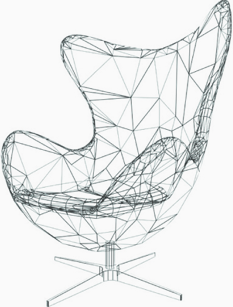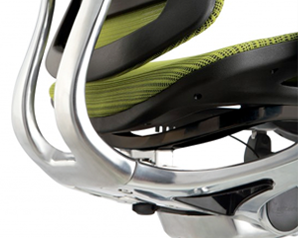Seating for Success: A Deep Dive into Training Chairs for Productive Work Sessions
Whether it's mastering new software, honing leadership skills, or keeping up with industry trends, effective training empowers participants to excel. But amidst the carefully crafted curriculum and engaging instructors, there often lies an unsung hero: the training chair.

Beyond mere seating arrangements, training chairs play a pivotal role in fostering focus, comfort, and ultimately, success during learning sessions. Choosing the right chairs doesn't just ensure physical well-being but also impacts cognitive function, engagement, and the overall effectiveness of the training program.
This deep dive explores the intricate world of training chairs, delving into key aspects that contribute to productive work sessions:
Ergonomics: The Backbone of Comfort and Focus
The human body wasn't designed for prolonged static sitting. Traditional chairs often lead to discomfort, fatigue, and even musculoskeletal issues. This is where ergonomics comes in, emphasizing the design of furniture and equipment to fit the human body and its needs. Ergonomic training chairs prioritize:
-
Lumbar support: A backrest that curves inwards to cradle the lower spine, encouraging proper posture and reducing back strain.
-
Adjustable features: The ability to adjust seat height, backrest angle, and armrests allows individuals to customize their sitting position for optimal comfort.
-
Breathable materials: Mesh or other breathable fabrics promote air circulation, especially important during longer sessions.
-
Active sitting options: Consider chairs that encourage slight movement, like kneeling chairs or balance balls, to improve circulation and prevent stiffness.
Boosting Engagement: Beyond Mere Comfort
While comfort is crucial, training chairs can also contribute to a more engaging and interactive learning environment. Key features to consider include:
-
Swivel functionality: Facilitates easy movement and communication between participants, fostering collaboration and discussion.
-
Stackable or easy-to-move options: Allow for quick reconfiguration of the training space to suit different activities or group sizes.
-
Glides or casters: Enable smooth movement without damaging flooring, facilitating dynamic activities and group work.
-
Integrated features: Some chairs offer built-in writing tablets, storage compartments, or charging ports, enhancing convenience and participation.
Matching the Chair to the Learning Environment
The "one-size-fits-all" approach rarely works in seating, and training chairs are no exception.
-
Duration of sessions: Shorter sessions might be fine with standard chairs, while longer ones require more ergonomic support.
-
Type of training: Active workshops might benefit from active sitting options, while lectures might need chairs with writing surfaces.
-
Space constraints: Stackable or foldable chairs provide flexibility in space-limited environments.
-
Budget: Ergonomics and features come at a cost, so find a balance between your needs and budget.

Going Beyond the Chair: Optimizing the Training Environment
Remember, the chair is just one piece of the puzzle. For truly successful training sessions, consider these additional factors:
-
Temperature and lighting: Maintain a comfortable temperature and adequate lighting to avoid fatigue and distraction.
-
Noise control: Minimize noise distractions with proper acoustics and seating arrangements.
-
Accessibility: Ensure all chairs are accessible and cater to diverse needs.
-
Breaks and movement: Encourage regular breaks and incorporate movement activities to maintain energy and focus.
Investing in Seating Success
Making informed choices about training chairs is an investment in the well-being, engagement, and ultimately, the success of your participants. By prioritizing ergonomics, considering the learning environment, and optimizing the overall training experience, you can set the stage for productive and impactful learning sessions. Remember, comfortable and well-suited seating can be the silent catalyst that propels participants towards achieving their goals.
Wrap-up
The right seating solution can enhance comfort, promote collaboration, and contribute to the overall success of training sessions. By understanding the importance of ergonomics, considering design elements, exploring adjustable features, and embracing technological advancements, organizations can invest in training chairs that empower their workforce for success in the modern workplace. Seating for success goes beyond mere functionality; it is about creating an environment that inspires productivity and supports the growth of individuals and organizations alike.
- 02.02.2024
-
Category:
- Auditorium & Public Setting Blog